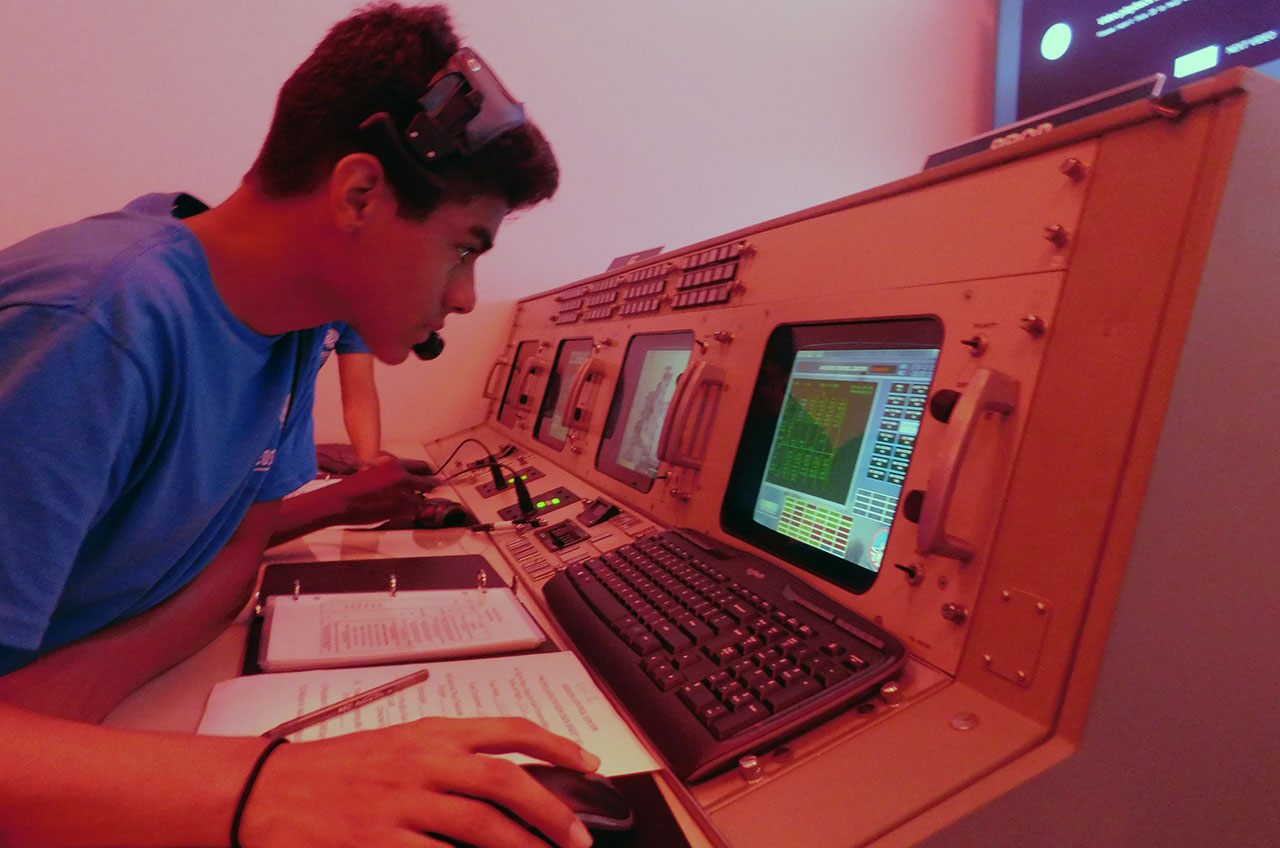'Apollo Redux' Tour to Use Historic Mission Control Consoles to Inspire Students

NASA is underwriting the return to use of some of its historic mission control consoles in an effort to inspire the next generation of engineers and scientists.
The space agency on Tuesday (June 5) announced it was awarding more than $650,000 to launch "Apollo Redux," a new set of traveling exhibits featuring the original hardware used to monitor the first missions to land on the moon. The Cosmosphere museum in Hutchinson, Kansas will restore and tour twelve of the historic consoles to select schools in Kansas and to museums and learning centers across the United States.
The "Apollo Redux" touring exhibits are expected to begin prior to the 50th anniversary of the Apollo 11 moon landing mission in July 2019. [Thank You, Houston: Unsung Heroes Star in New 'Mission Control' Doc]
The exhibit venues will be chosen based on their ability to reach underserved students who might not otherwise have access to similar artifacts and opportunities.
"The goal is to allow a variety of people to see themselves involved in NASA," said Tracey Tomme, the executive vice president and chief operating officer of the Cosmosphere.
The consoles were originally used for "back room" support inside the Mission Control Center at NASA Johnson Space Center in Houston for 30 years. They were acquired by the Cosmosphere in the mid-1990s and until now, the museum has held the consoles in its archive, occasionally loaning some of them to support Hollywood film projects.
In addition, the museum adapted four of the cabinets for its on-going educational space camp.
Get the Space.com Newsletter
Breaking space news, the latest updates on rocket launches, skywatching events and more!
"Apollo Redux" was begun at the Cosmosphere in 2015 as an interactive experience for students and teachers visiting the museum. More than 1,000 students to date have taken part in the program's mission simulations, which integrated viewing Apollo artifacts on display.
The traveling version of "Apollo Redux" will incorporate the consoles to deliver the same access to actual hardware.

"We will be able to highlight our position of being a space museum with an amazing collection, a science education center that offers top-quality educational experiences and a world-renowned space artifact restoration and fabrication division, SpaceWorks," said Tomme.
With the funds from NASA, SpaceWorks conservators will update the consoles to look as they did during the Apollo moon missions, including displaying data on their screens and powering indicator lights. They will also work to protect the hardware from damage, building custom cases for their transport between venues.
The exhibits will include information about Mission Control, including where the flight controllers were seated and what positions might be needed for future missions back to the moon and onto Mars. Further, firsthand accounts from oral histories will also be featured, allowing visitors to hear from former and current flight controllers who come from varied backgrounds and fields of study.
Students taking part in "Apollo Redux" will be able to sit or stand at the console to pose for a souvenir photo. Imaging technology may even allow for the student to appear to be wearing Apollo-era flight controller clothes in the photo.
The Cosmosphere's educators will compliment the console encounter with new web-based, space science and history lessons for students in grades 6 through 8. The curriculum will include lessons in math, art and the language arts, with topics spanning the history of the Space Race and career opportunities in today's space program.
The "Apollo Redux" exhibits are separate from the similar work also being completed by the Cosmosphere to restore "front room" consoles for display in Houston. That project, which began in January, is part of a larger $5 million effort to return the Apollo-era Mission Control, a National Historic Landmark, to its Apollo 11 configuration and appearance in time to celebrate the mission's 50th anniversary in 2019.
The "Apollo Redux" grant was one of three STEM-focused awards made in response to the Teams Engaging Affiliated Museums and Informal Institutions solicitation. The other projects funded include an immersive "escape room" game by the Arizona Science Center in Phoenix and the world's first botanic garden makerspace dedicated to NASA's food production challenges, as created by the Fairchild Tropical Botanic Garden in Coral Gables, Florida.
Follow collectSPACE.com on Facebook and on Twitter at @collectSPACE. Copyright 2018 collectSPACE.com. All rights reserved.
Join our Space Forums to keep talking space on the latest missions, night sky and more! And if you have a news tip, correction or comment, let us know at: community@space.com.

Robert Pearlman is a space historian, journalist and the founder and editor of collectSPACE.com, a daily news publication and community devoted to space history with a particular focus on how and where space exploration intersects with pop culture. Pearlman is also a contributing writer for Space.com and co-author of "Space Stations: The Art, Science, and Reality of Working in Space” published by Smithsonian Books in 2018.In 2009, he was inducted into the U.S. Space Camp Hall of Fame in Huntsville, Alabama. In 2021, he was honored by the American Astronautical Society with the Ordway Award for Sustained Excellence in Spaceflight History. In 2023, the National Space Club Florida Committee recognized Pearlman with the Kolcum News and Communications Award for excellence in telling the space story along the Space Coast and throughout the world.










